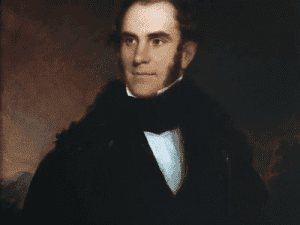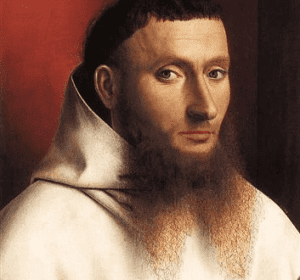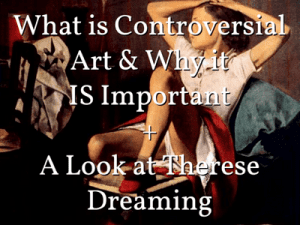(Skip to bullet points (best for students))

Born: 1869
Died: 1954
Summary of Henri Matisse
Henri Matisse is usually considered as the finest colourist of the twentieth century, and his innovations are often compared to those of Pablo Picasso. He rose to fame as the head of the French movement Fauvism after emerging as a Post-Impressionist. Despite his interest in Cubism, he rejected it in favour of using colour as the basis for expressive, colourful, and frequently massive works. He aspired to produce work that would have “a soothing, calming influence on the mind, rather like a good armchair.” as he once controversially stated.
Still life and the naked were favoured topics throughout his career; North Africa was also a major source of inspiration, and he made an important addition to collage with a sequence of works employing cut-out colour forms at the end of his life. He is also well-known as a sculptor.
In his Fauve works, Matisse employed pure colours and the white of exposed canvas to create a light-filled environment. Matisse utilised contrasting regions of pure, unmodulated colour to add depth and structure to his paintings rather than modelling or shading. Throughout his career, these concepts remained essential to him.
His work was influential in promoting the significance of ornament in modern art. Despite the fact that he is often recognised as a painter who is concerned with joy and satisfaction, his use of colour and pattern is frequently disorienting and disturbing.
Art from diverse civilizations impacted Matisse greatly. He integrated some of the ornamental characteristics of Islamic art, the angularity of African sculpture, and the flatness of Japanese prints into his own style, after seeing numerous exhibits of Asian art and travelling to North Africa.
Matisse famously stated that he wanted his work to be “of balance, of purity and serenity devoid of troubling or depressing subject matter,” and this goal influenced many, like Clement Greenberg, who sought to art for solace from the contemporary world’s confusion.
In both sculpture and painting, the human form was fundamental to Matisse’s work. Its significance in his Fauvist art indicates his belief that the topic had been overlooked in Impressionism, and it remained such to him. He fractured the figure brutally at times, and then treated it almost as a curvilinear, ornamental feature at other times. Some of his work reflects the mood and personality of his models, but he primarily utilised them as vehicles for his own emotions, reducing them to cyphers in his gigantic creations.
Biography of Henri Matisse
Childhood
Emile-Hippolyte-Henri Matisse, a grain and hardware trader, and Anna Heloise Gerard were the parents of Henri-Emile-Benoit Matisse. He grew raised in Bohain-en-Vermandois and attended the College of Saint Quentin before studying law in Paris.
In 1889, he returned to Saint-Quentin as a legal clerk, despite the fact that he considered the job dull and anxious. Later that year, he was diagnosed with appendicitis and spent many months recuperating at home.
At the age of 20, he found the pleasant seclusion and independence of painting at this period.
Early Life
Matisse returned to Paris in 1891, this time to study painting, smitten by his new love. He failed the admission examinations for the Ecole des Beaux Arts, but in 1892 he joined the workshop of Gustave Moreau, a French symbolist painter. “Colors must be thought, dreamed, imagined.”
Moreau instructed his students. Matisse’s expressive use of colour was aided by his Symbolist approach to painting. Matisse and his partner, Caroline Joblaud, suddenly had a daughter, Marguerite, in 1894. He studied under Moreau until 1898 after finally getting accepted to the Ecole des Beaux Arts in 1895.
Matisse married Amelie Parayre in 1898 after ending his engagement with Caroline. Matisse tried to find another teacher after Moreau died while the couple was on their honeymoon overseas. He also had the responsibility of raising three children: he and his wife had two boys, Jean and Pierre, born in 1899 and 1900, respectively.
Despite their financial difficulties, Matisse began his lifelong collection of avant-garde art by acquiring Paul Cézanne’s Three Bathers (1879-82) from Ambroise Vollard’s gallery. Matisse progressed past his Impressionist research, influenced by the Post-Impressionists’ use of colour and the writings of art critic Paul Signac.
Mid Life
Matisse spent the summer of 1905 at Collioure, where he collaborated with André Derain to develop a new style of vivid colours and pure light. After critic Louis Vauxcelles described the arrangement of paintings at the Salon d’Automne in 1905 – an important showcase for the new movement – as “Donatello among the wild beasts fauves.”
The new style became known as Fauvism. Matisse was quickly dubbed “chief fauve” by Louis Vauxcelles and other critics as the Fauvists’ leader in the press. Though short-lived, the Fauvist movement created one of modern art’s two orientations. Matisse met Pablo Picasso in Gertrude Stein’s workshop in 1905.
Following Paul Cézanne’s death, the two painters established a lifetime relationship and rivalry, with each artist symbolising a possible route for contemporary art after his death. Matisse attempted to create an object’s shape using colour, whereas Picasso disassembled items into Cubist planes.
By 1907, no one, not even Matisse, was painting in the Fauve manner. He then moved on to creating simpler shapes against flat colour surfaces. His interest in sculpture grew as well, particularly North African work, owing to his adventures in Algeria in 1906.
He employed sculpture to address visual issues, particularly those involving the human body. He also received funding to start an art school in 1908, where he taught around 80 pupils over the course of three years. And he drew support from avant-garde art buyers, notably Sergei Ivanovich Shchukin of Russia, who ended up owning scores of his works.
Matisse focused on presenting the human figure in indoor settings adorned with Oriental carpets and trinkets from 1911 until 1916. Despite the fact that he was not recruited during World War I, the gravity of world events had an impact on his work, muting his palette.
However, at the end of the war, he reverted to his brilliant colours, resulting in his “Nice period” which lasted from 1917 until 1930. The white of the exposed canvas is used in several of these paintings to depict the brilliant sunshine of southern France.
Matisse experienced an artistic crisis and shift in the year 1930. He flew to Tahiti and then to America three times in three years, dissatisfied with his work’s conservative path. He experimented with book illustration, tapestry design, and glass engraving rather than easel painting. He was commissioned by the Barnes Foundation in Pennsylvania to design a mural in 1931, which he finished in 1933.
Late Life
Matisse’s worry regarding the direction of his work was exacerbated by his divorce from his wife in 1939, the start of World War II, and bad health. He was confined to a wheelchair after major surgery in 1941.
Drawing and paper cut-outs were his go-to mediums since they were more physically doable and offered new avenues for expression. Matisse used paper cut-outs to represent the confluence of drawing and painting.
Matisse was inspired by the paper cut-outs to reduce forms even further, reducing the object’s “essential character” until it became a symbol of itself. He employed the paper cut-out technique to create stained glass windows for the Chapelle du Rosaire in Vence, France, as well as large-scale works. Matisse was able to continue working despite his sickness thanks to the aid of helpers. Matisse died of a heart attack on November 3, 1954.
Matisse and Fauvism were considered as a forerunner to Abstract Expressionism and much of modern art by scholars in the 1950s. Several Abstract Expressionists may trace their ancestors back to him, although for different reasons. Some artists, like as Lee Krasner, are affected by his different mediums; Matisse’s paper cut-outs prompted her to chop apart and reconstruct her own paintings.
Colour field artists like Mark Rothko and Kenneth Noland were enamoured with his brightly coloured wide fields, as shown in the Red Studio (1911). Richard Diebenkorn, on the other hand, was more fascinated by Matisse’s use of space and the spatial tension between his subject and the flat canvas.
Henri Matisse Facts
What is Henri Matisse best known for?
As a Fauvist painter, Henri Matisse revolutionised and influenced the art world in the early 20th century.
Why did Matisse stop painting?
It wasn’t until he was in his late sixties that Matisse began to hack into painted paper with scissors in order to create drawings for several commissions. As time went on, Matisse preferred cut-outs to painting since he had created a new medium.
How did Henri Matisse become famous?
When he was recovering from an operation, he began painting and relocated to Paris in 1891 to pursue a career in the art field. As a painter, sculptor, and graphic designer, Matisse was one of the most important artists of the twentieth century.
Why is Matisse important to art history?
For many, Henri Matisse is the finest 20th-century colorist. In his expressive, ornate and large-scale works, the French artist relied on colour as a foundation. It was once said of him that he wanted to make art that was “a soothing, calming effect on the psyche, rather like a nice armchair.
How much is a Matisse painting worth?
Various works by Henri Matisse have been auctioned off, with final sales values ranging from six dollars to eighty-seven million dollars, depending on the size and medium. Odalisque couchée aux magnolias sold at Christie’s New York in 2018 for a record price of 80,750,000 USD.
Famous Art by Henri Matisse
Luxe, Calme, et Volupte
1904-1905

The title of this artwork is inspired by the chorus of Charles Baudelaire’s poem Invitation to a Voyage (1857), in which a man begs his beloved to join him on a journey to heaven. The view from Paul Signac’s residence in Saint-Tropez, where Matisse was vacationing, is most likely the inspiration for the landscape. The most of the ladies are naked (as in a typical classical idyll), but one lady, assumed to be the painter’s wife, is dressed in modern clothing. This is Matisse’s sole significant Neo-Impressionist painting, and its technique was influenced by Paul Signac and Georges Seurat’s Pointillism.
Joy of Life (Le Bonheur de Vivre)
1905-1906

Matisse created landscapes in the south of France during the summers during his Fauve years, then expanded ideas into larger works when he returned to Paris. Joy of Life, his second major imaginative work, is a good example of this. He based the idyll on a landscape he had painted near Collioure, but it also incorporates elements from Watteau, Poussin, Japanese woodcuts, Persian miniatures, and 19th-century Orientalist depictions of harems. The scene is made up of separate elements that have been combined to make a whole. At the Salon des Indépendants, the enormous artwork and its startling colours garnered mixed reviews.
The Moroccans
1915-1916

Matisse began working on this painting in 1913, and it was inspired by his trips to Morocco at the time. A person sits on the right with her back to us, fruit lies in the foreground on the left, and a mosque rises beyond a terrace in the distance. Matisse said that he used black in his paintings on occasion to simplify the composition, but it surely also recalls the harsh shadows cast by the region’s intense sunlight. The Moroccans (1917), like Bathers by a River (1917), was influenced by Picasso’s Cubism, and some have even compared it to Picasso’s Three Musicians (1921).
BULLET POINTED (SUMMARISED)
Best for Students and a Huge Time Saver
- Henri Matisse is usually considered as the finest colorist of the twentieth century, and his innovations are often compared to those of Pablo Picasso.
- He rose to fame as the head of the French movement Fauvism after emerging as a Post-Impressionist.
- Despite his interest in Cubism, he rejected it in favour of using colour as the basis for expressive, colourful, and frequently massive works.
- He aspired to produce work that would have “a soothing, calming influence on the mind, rather like a good armchair.” as he once controversially stated.
- Still life and the naked were favoured topics throughout his career; North Africa was also a major source of inspiration, and he made an important addition to collage with a sequence of works employing cut-out colour forms at the end of his life.
- He is also well-known as a sculptor.
- In his Fauve works, Matisse employed pure colours and the white of exposed canvas to create a light-filled environment.
- Matisse utilised contrasting regions of pure, unmodulated colour to add depth and structure to his paintings rather than modelling or shading.
- His work was influential in promoting the significance of ornament in modern art.
- Despite the fact that he is often recognised as a painter who is concerned with joy and satisfaction, his use of colour and pattern is frequently disorienting and disturbing.
Information Citations
En.wikipedia.org, https://en.wikipedia.org/.
Recommend0 recommendationsPublished in Art History, Artists







Responses